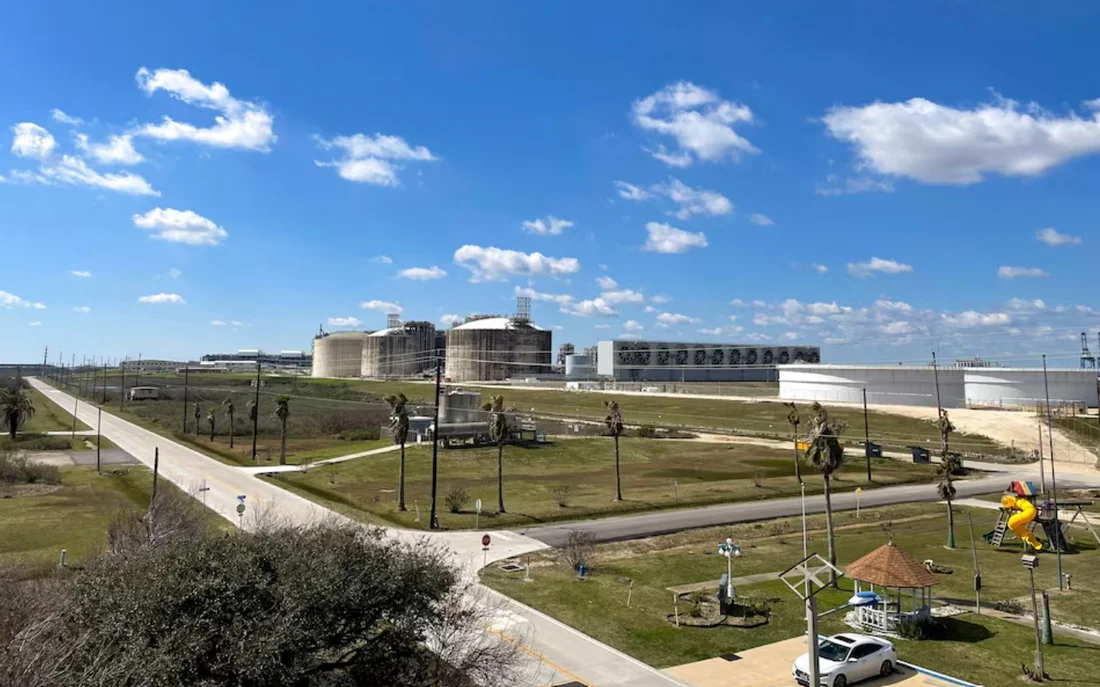
US LNG shipments for 2024 look set to hit 86.9 million metric tons, according to ship-tracking data from Kpler.
That total is around 720,000 tons or 0.8 per cent more than in 2023, and so sustains the expansion trend of US LNG exports despite brief outages at a number of export terminals in 2024 and delays at new projects that are under construction.
Despite the volume growth, it hasn’t been an easy year for the US LNG export sector, which became the world’s largest last year.
Record gas output at home combined with slowing gas demand in key markets resulted in a roughly 21 per cent fall in average US LNG export prices so far this year compared to 2023, according to the US Energy Information Administration (EIA).
From January through September, LNG export prices averaged $6.15 per thousand cubic feet, according to EIA.
That compares to a $7.75 average over the same period in 2023 and a $12.20 average in 2022, which was when Russia’s invasion of Ukraine triggered power sector turmoil and a sharp rise in LNG imports across Europe.
This year’s fall in US LNG export prices was greater than the roughly 15 per cent decline over the same period in Henry Hub natural gas futures – the US benchmark gas price – and so helped squeeze LNG exporter revenues through much of 2024.
A 22 per cent drop in purchases by top market Europe from 2023’s levels also hurt US LNG exporters by forcing them to find other buyers, often in more distant and dispersed locations that take longer and cost more to service.
For 2024 as a whole, Europe is on track to purchase 43.8 million tons of LNG from the US, which is 12.7 million tons less than European buyers purchased in 2023 and the lowest full-year total since 2021, according to Kpler.
To offset the lower orders from Europe, US exporters had to dial up sales to Asia, where volumes climbed by 8 million tons on the year to 31.6 million tons this year.
But shifting those volumes to buyers in Japan, South Korea, India and China costs more than the equivalent cargo loads to Europe due to the far longer journey times.
The trip duration from Sabine Pass LNG export terminal in the US Gulf to Sodegaura LNG import terminal in Japan is roughly 30 days – twice as long as the trip to Rotterdam port in the Netherlands, which is Europe’s main gas hub.
Longer journey times means higher freight costs as well more boil-off of the gas from storage tanks, which results in lower volumes that can be discharged upon delivery.
Rising global natural gas prices look set to boost earnings for gas sellers heading into 2025, and should see LNG exporter earnings pick up in the months ahead.
Forward gas prices in the TTF gas trading hub in the Netherlands are currently projected to climb by nearly 12 per cent in 2025 from the 2024 average, while Henry Hub futures are seen climbing by 32 per cent from their 2024 average, according to LSEG.
However, higher gas costs may also serve to undermine the appetite for LNG in cost-sensitive economies where coal and other power sources are cheaper and more abundant.
Combined LNG purchases by India, Pakistan and Bangladesh are on course to hit a record of nearly 40 million tons in 2024, according to Kpler.
But power producers in those countries rank among the most cost-sensitive in Asia, and are well versed in switching out gas for other fuels when price moves or other market forces dictate.
In 2022, when global LNG and gas prices soared in the wake of Russia’s invasion of Ukraine, combined purchases into South Asia dropped by 16 per cent, or 6 million tons, from the year before as gas buyers balked at the high gas costs.
In 2025, gas buyers in that region could again make a retreat from world markets if prices climb to uneconomical levels and justify the use of coal or other fuels instead.
Even in wealthier Europe, gas buyers may also slow purchases if local industrial activity remains muted, or if renewables and other clean energy sources boost supplies enough to displace fossil fuel output.
This level of LNG demand uncertainty means further growth in overall LNG export volumes is not guaranteed in 2025.